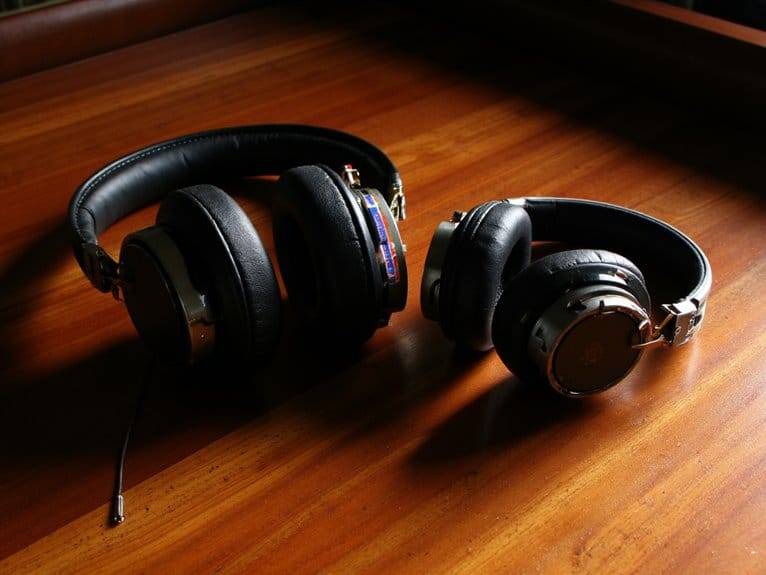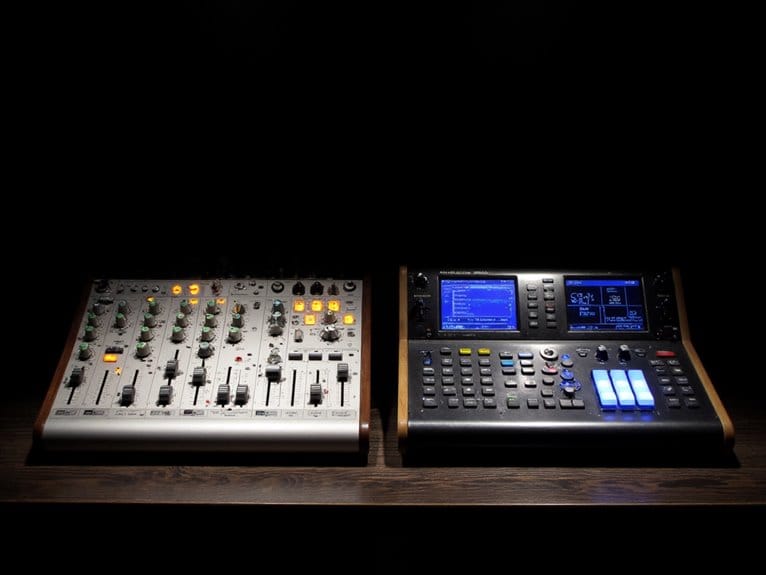How Do I Edit a Sound Podcast?
To edit a sound podcast, start by selecting the right editing software, considering factors like user interface, compatibility, and pricing. Next, organize your files in a master folder with descriptive labels and subfolders for each episode. Clean up background noise using techniques like spectral repair and audio refinement. Remove mistakes and errors, such as filler words and awkward phrasing, to maintain listener engagement. Finally, strategically add music and sound effects to intensify the podcast's atmosphere. By mastering these essential editing skills, you'll be well on your way to crafting a professional-sounding podcast that resonates with your audience, and there's even more to discover in the world of podcast editing.
We are supported by our audience. When you purchase through links on our site, we may earn an affiliate commission, at no extra cost for you. Learn more.
Choosing the Right Editing Software
When it pertains to editing a podcast, selecting the right editing software is a pivotal decision that can markedly impact the quality and efficiency of the post-production process. With numerous software options available, it's essential to choose one that aligns with your editing style and requirements. A user-friendly interface is paramount, as it allows you to focus on the creative aspects of editing rather than getting bogged down in technical complexities. Popular software options include Audacity, Adobe Audition, and GarageBand, each offering unique features and functionalities. Consider factors such as compatibility, pricing, and customer support in making your decision. By selecting the right software, you'll be well on your way to producing a high-quality podcast that resonates with your audience.
Importing and Organizing Your Files
Prior to diving into the editing process, it's crucial to import and organize your podcast files in a logical and structured manner, ensuring that all necessary elements are readily accessible and easily identifiable. A well-organized file structure is essential for efficient editing and reduces the risk of file misplacement. When importing files, consider creating a clear hierarchy of folders and subfolders, labeling each file with descriptive names and dates. This will enable you to quickly locate specific files and make the editing process more streamlined.
- Create a master folder for your podcast project, containing subfolders for each episode
- Label each audio file with a descriptive title, including the episode number and guest names
- Organize files by type, such as interviews, narration, and sound effects
- Use a consistent naming convention throughout your file structure
Cleaning Up Background Noise Issues
Background noise can substantially degrade the overall quality of your podcast, making it essential to address these issues early on in the editing process to guarantee a polished and professional final product. One effective approach is to employ noise reduction strategies, such as spectral repair or adaptive noise reduction, to minimize unwanted background sounds. These techniques can be applied to specific frequency ranges or entire audio tracks, depending on the severity of the noise. Additionally, audio refinement techniques like equalization and compression can help refine the tone and balance of your podcast. By implementing these strategies, you can conspicuously boost the clarity and overall listening experience of your podcast, making it more engaging for your audience.
Editing Out Mistakes and Errors
Having refined the tone and balance of your podcast through noise reduction and audio refinement techniques, it's now important to scrutinize the content itself, pinpointing and editing out mistakes and errors that could detract from the overall listening experience.
Effective error correction strategies and mistake elimination techniques are vital in maintaining listener engagement and credibility.
- Identify and remove filler words, such as 'um' and 'ah,' to improve speech clarity.
- Correct awkward phrasing, mispronunciations, and inaccuracies to verify accuracy and authority.
- Eliminate awkward pauses, excessive laughter, or other distracting sounds that disrupt the flow.
- Use editing software to seamlessly remove mistakes, certifying a polished and professional-sounding podcast.
Adding Music and Sound Effects
One of the most effective ways to boost the production value of your podcast is by strategically incorporating music and sound effects that complement your content and intensify the listener's experience. Sound design elements like intro and outro music, segues, and ambient sounds can enhance your podcast's overall atmosphere. However, it's vital to verify you're using licensed music that aligns with your podcast's tone and style. Music licensing platforms like AudioJungle, Epidemic Sound, and Audiosocket offer a vast library of royalty-free tracks and sound effects. When selecting music and sound effects, consider the mood and pace you want to create and balance them with your spoken content. By thoughtfully integrating these elements, you can craft a mesmerizing and engaging listening experience that resonates with your audience.



